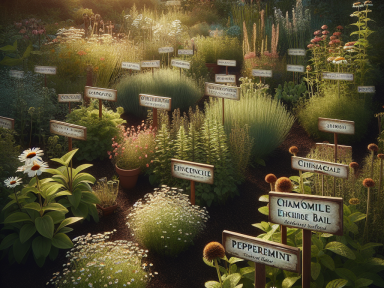Why Every Homesteader Needs a Medicinal Herb Garden
The world is volatile and change is the only constant. In unpredictable times, self-reliance is more than just a virtue, it’s a survival strategy. One of the best ways to fortify yourself and your home is through a medicinal herb garden.
The Importance of Medicinal Herbs in a Survival Scenario
Should a severe situation arise, your access to a doctor or pharmacy might be cut off. How do you plan to deal with headaches, skin issues, digestive complaints, or more serious health issues? This is where the power of medicinal herbs comes into play.
Medicinal herbs have been used for centuries to aid in healing and wellness. They can be a powerful ally in your survival arsenal. Having them on hand is like having a personal pharmacy growing right in your backyard.
Getting Started: Planning Your Medicinal Herb Garden
The first step to a successful medicinal herb garden is planning.
- Identify the Most Common Ailments: Certain herbs are useful for specific health issues. Ensure your herb selection is tailored to the most common ailments you and your family may encounter.
- Research: Familiarize yourself with the properties of each herb, how to use them and any possible contra-indications.
- Choose Your Location: Most herbs require good sunlight and well-drained soil. However, some may thrive in elusive shade corners. Research thoroughly about each herb’s needs.
- Create Your Garden Layout: Smaller herbs can be planted near the edges, while taller plants should be stationed in the center or back.
Selecting Your Medicinal Herbs: Plants with Healing Power
In your medicinal herb garden, consider incorporating these ten powerful healing plants.
- Chamomile: Known for its calming effects, it’s used as a sleep aid and for soothing upset stomachs.
- Echinacea: Boosts the immune system and helps fight off cold and flu symptoms.
- Peppermint: Aids digestion and helps to control nausea and headaches.
- Lemon Balm: Used as a calming agent to soothe nerves, and to treat certain skin conditions.
This list is just the tip of the iceberg. Once you dive into the world of medicinal herbs, you’ll find countless options to choose from.
Taking Action: Plant, Nurture, Harvest
Once your garden is planned and your herbs are selected, it’s time to get your hands dirty. Cultivate your plants with love and respect. Remember, they’re not just plants; they’re your lifeline. Regularly check for pests, ensure they’re watered, and gather them at the right time for maximum potency.
Invest in Your Survival: Be Prepared
Your medicinal herb garden isn’t just a hobby, it’s a key part of your survival strategy. Invest the time, energy, and resources now to reap the benefits later when you may need them most. This isn’t a fear tactic; it’s a call to action. Take control of your health and your future by becoming your own healer.
In uncertain times, remember – self-reliance isn’t just about surviving; it’s about thriving.




GIPHY App Key not set. Please check settings